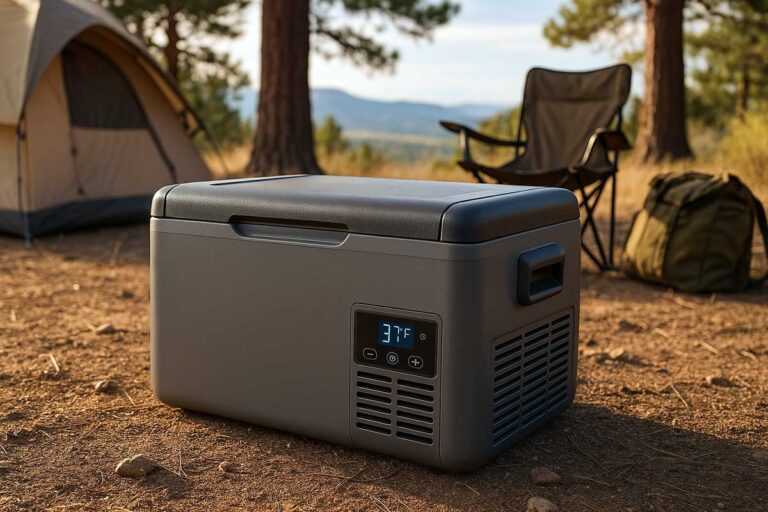Does Water Form in the Bottom of Camping Fridges? 5 Essential Fixes
Does water form in the bottom of camping fridges? Discover 5 proven fixes to beat condensation. Act fast to keep your gear reliable on every trip!
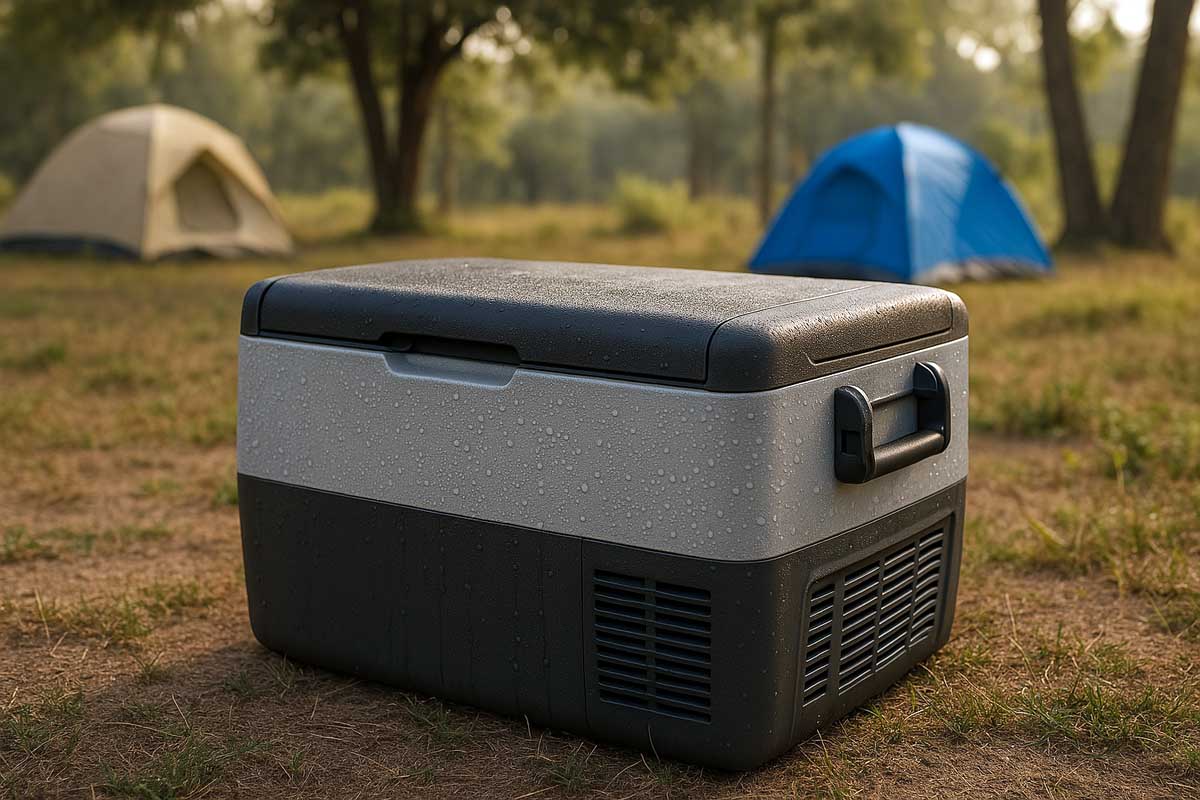
Yes, water can form at the bottom of camping fridges due to natural condensation from the cooling process. Over the years, I’ve learned many tricks to ensure a smooth camping experience, and one question I’ve encountered often is: does water form in the bottom of camping fridges? The short answer is yes. As camping fridges cool down, they create condensation, and that moisture often collects at the bottom. In this article, I’ll explain why this happens, what it means for your equipment, and what you can do to manage it effectively.
This guide is designed to give you a thorough and easy-to-understand explanation. Whether you’re a seasoned camper or just starting, the following sections offer clear, step-by-step insights to help you care for your camping fridge and maintain its efficiency while ensuring your food and beverages stay in prime condition.
Contents Include
- 1 How Camping Fridges Work
- 2 Why Water Forms at the Bottom
- 3 Steps to Prevent and Manage Water Formation
- 4 Detailed Troubleshooting and Advanced Solutions
- 5 Table: Quick Reference for Managing Water in Camping Fridges
- 6 Personal Experiences and Practical Advice
- 7 Additional Techniques to Reduce Condensation
- 8 FAQs about Water Form in the Bottom of Camping Fridges
- 9 Final Thoughts
How Camping Fridges Work
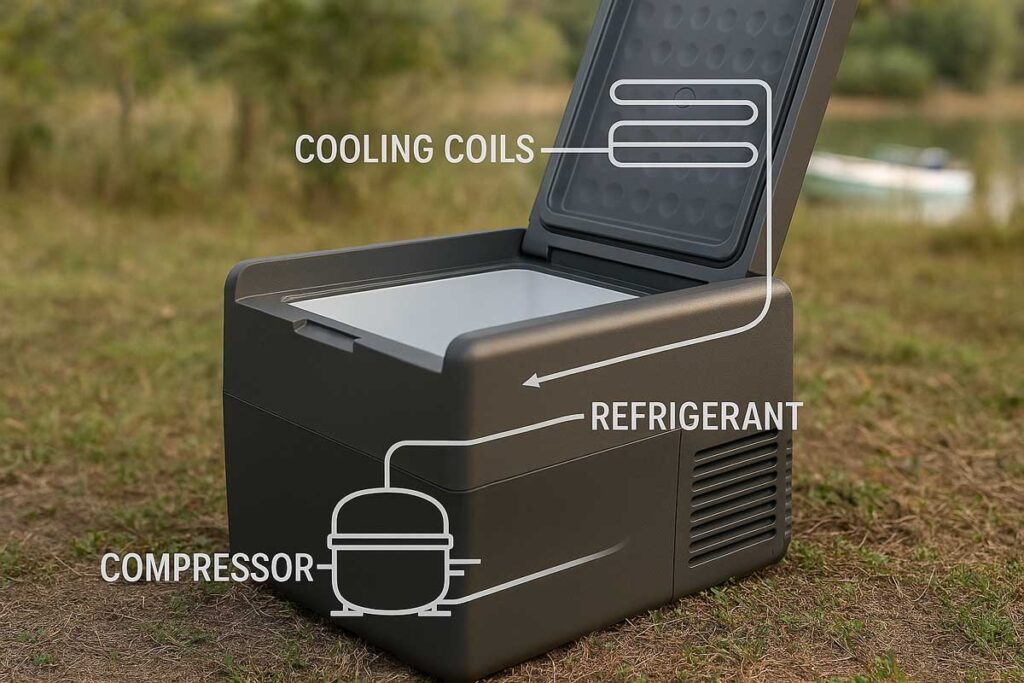
Basic Cooling Principles
Camping fridges work on the same basic principles as household refrigerators. They remove heat from the interior and expel it to the environment. Here’s a straightforward breakdown:
- Cooling Cycle: A refrigerant circulates through coils in the fridge, absorbing heat from inside. When the warm refrigerant moves outside the fridge (or to a designated condenser area), it releases the heat.
- Temperature Differential: The fridge creates a temperature difference between its interior and the outside environment, leading to condensation when warm, moist air contacts the cold surfaces inside.
- Design Variations: There are compressor-based fridges, thermoelectric fridges, and absorption refrigerators common in camping setups. Each operates under the same fundamental principles but with variations that can affect moisture accumulation.
Read more: What is the best temperature for a camping fridge
Condensation in the Cooling Process
Condensation occurs when warm, humid air comes into contact with a cold surface. In the context of camping fridges:
- Moisture Accumulation: As cold surfaces inside the fridge cause water vapor in the warm air to condense into liquid, droplets form and eventually collect at the lowest points—usually at the bottom of the unit.
- Normal Operation: This process is entirely normal and is a byproduct of how the fridge maintains low temperatures.
Why Water Forms at the Bottom
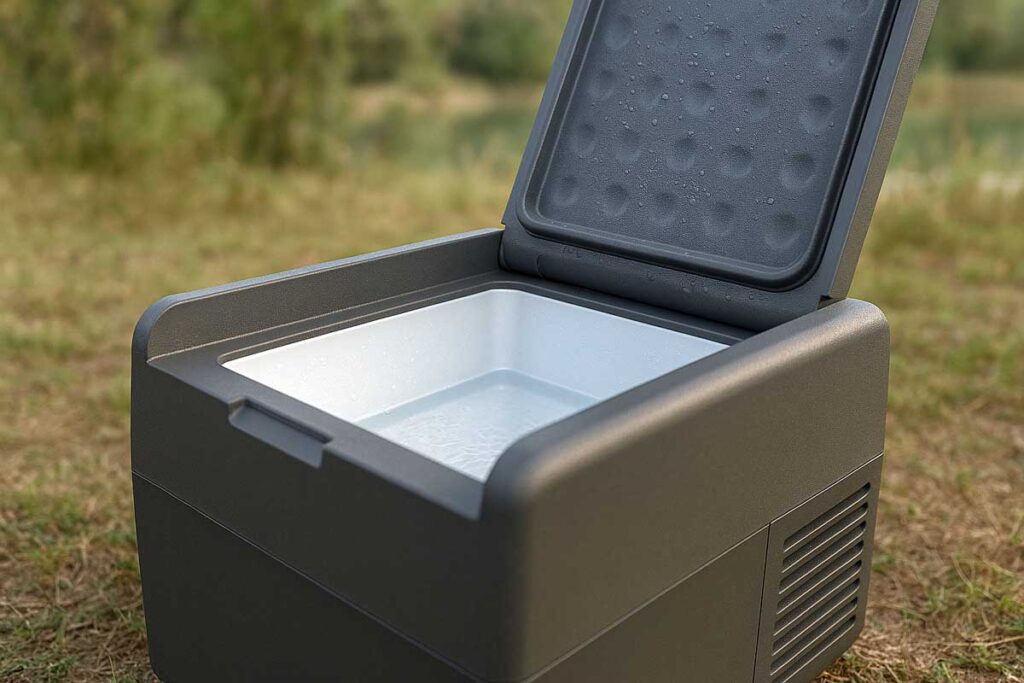
The Role of Temperature and Humidity
Water forms in your camping fridge primarily due to ambient humidity. When you open the fridge or if the external weather is humid, moisture seeps in. Here are the key factors:
- Ambient Humidity: In damp or humid weather, more moisture enters the fridge when you open it. This moisture condenses on the cold surfaces.
- Temperature Differential: A greater gap between the internal fridge temperature and the external temperature increases condensation.
- Cooling Methods: Compressor-based fridges, for instance, are highly effective at cooling and may lead to more frequent condensation compared to other types.
Design Considerations
Not all fridges are built the same. Some design elements can affect how water is managed:
- Drainage Systems: Many camping fridges incorporate a drainage system or a tray designed to collect condensed water and allow it to evaporate.
- Insulation Quality: Higher-quality insulation minimizes temperature fluctuations, reducing the impact of ambient humidity.
- Internal Layout: The design of shelves, compartments, and the internal surface can either promote or hinder the flow of condensed water.
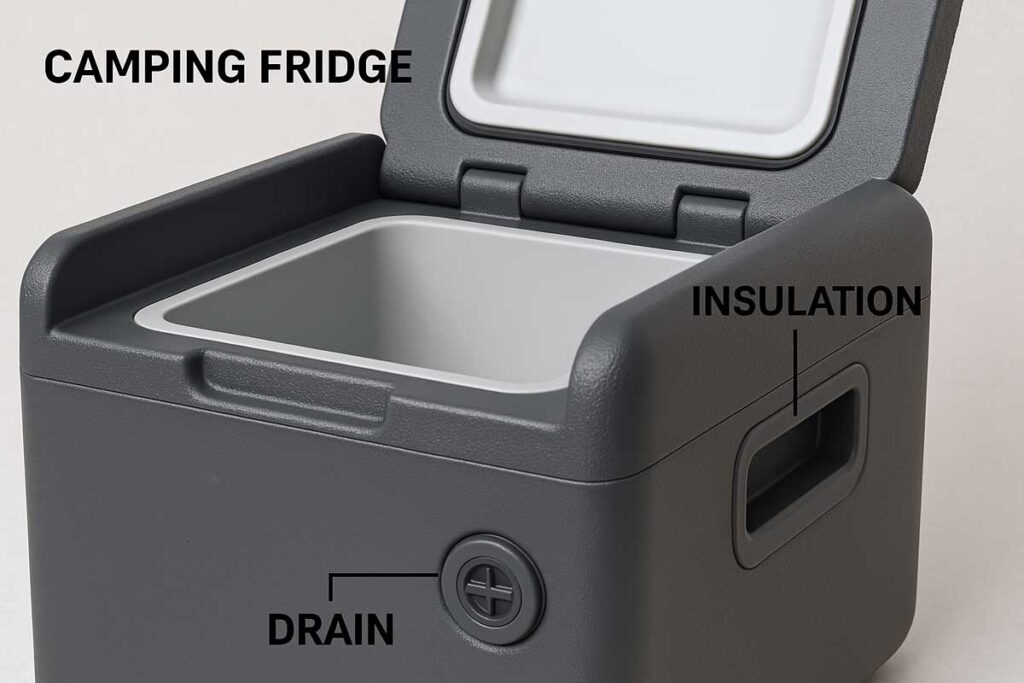
Environmental Conditions
Camping environments often bring variable weather conditions, and these can influence condensation:
- Cold Nights and Warm Days: Rapid temperature changes can lead to increased condensation as the fridge cycles on and off.
- Moisture from Food: Fresh food items with high water content can increase interior moisture, leading to additional condensation.
- Ventilation Issues: Poor ventilation around the fridge, particularly in enclosed spaces like tents or small RV compartments, can trap moisture and exacerbate water accumulation.
Steps to Prevent and Manage Water Formation
To avoid the hassles associated with water buildup in your camping fridge, consider the following practical tips based on camping experience.
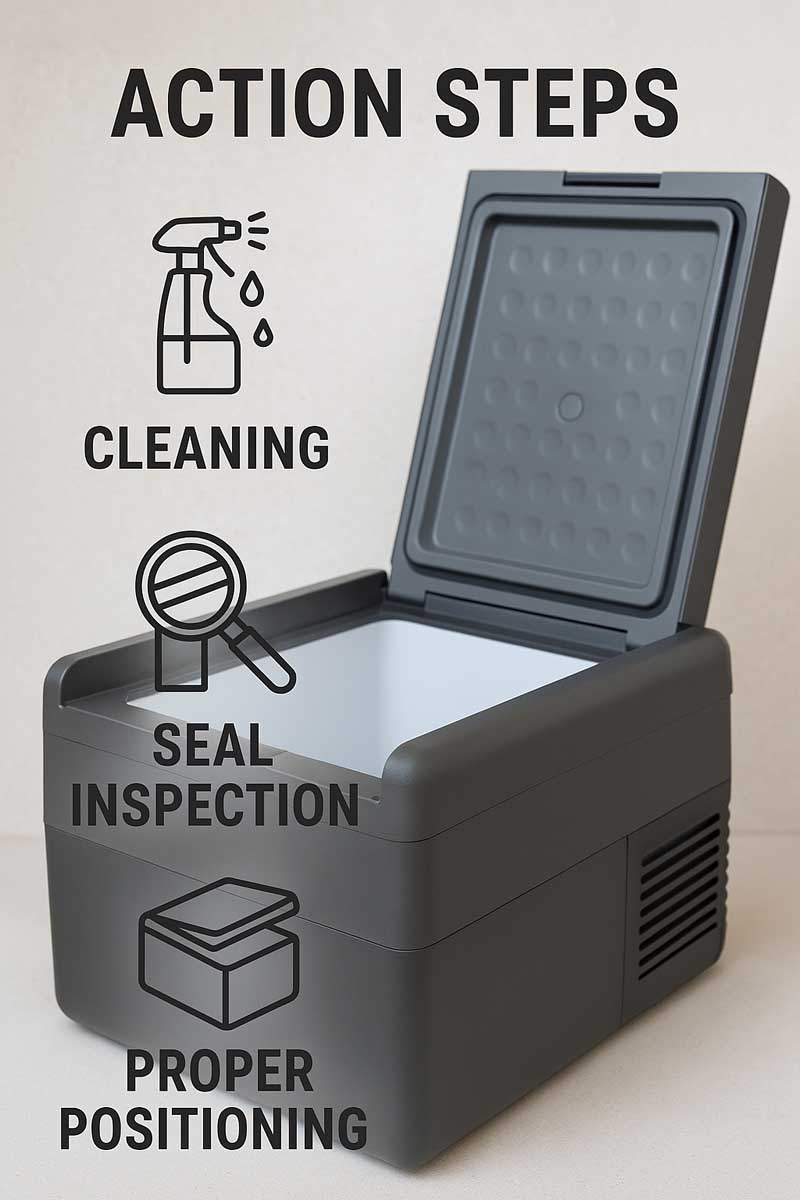
Regular Maintenance and Care
- Clean and Dry the Interior Regularly: After each use, empty the fridge and wipe the interior thoroughly with a clean, dry cloth. This practice removes existing moisture and discourages mold or mildew growth.
- Inspect Seals and Gaskets: Ensure that door seals and gaskets are intact. Replace any parts that show signs of wear and tear. A proper seal keeps the warm, moist outside air from entering the unit.
- Position Your Fridge Appropriately: Place your fridge on a dry, level surface. Avoid placing it directly on the damp ground by using a small platform or insulating mat. This step can prevent additional moisture from seeping in.
Optimize Operation Settings
- Monitor Temperature Settings: Keeping your fridge at an optimal temperature reduces the chance for water condensation. An overly cold setting may promote condensation when warmer air enters, while a slightly higher temperature can minimize drastic temperature differences.
- Limit Door Openings: Each time you open the fridge, warm air enters and increases the chance of condensation. Plan your trips to minimize unnecessary door openings. Group items together, so you aren’t constantly accessing the contents.
- Ventilation Considerations: Ensure that the ventilation points on your fridge are free of obstructions. Better airflow inside the fridge helps balance the temperature and reduces the buildup of moisture on internal surfaces.
Use of Accessories and Tools
- Moisture Absorbers: You can place small moisture absorbers or desiccant packs inside the fridge. Products made of silica gel or similar materials can capture excess moisture. Be sure to use these accessories in moderation and check them periodically.
- Drip Trays and Liners: Some camping fridges include a removable drip tray at the bottom. Regularly empty and clean these trays to avoid overflow of accumulated water. You can also line the bottom with absorbent materials (that are safe for food storage) to manage any liquid buildup.
Detailed Troubleshooting and Advanced Solutions
Sometimes, water formation may be due to less obvious issues that require troubleshooting. Here are further steps and techniques you might consider:
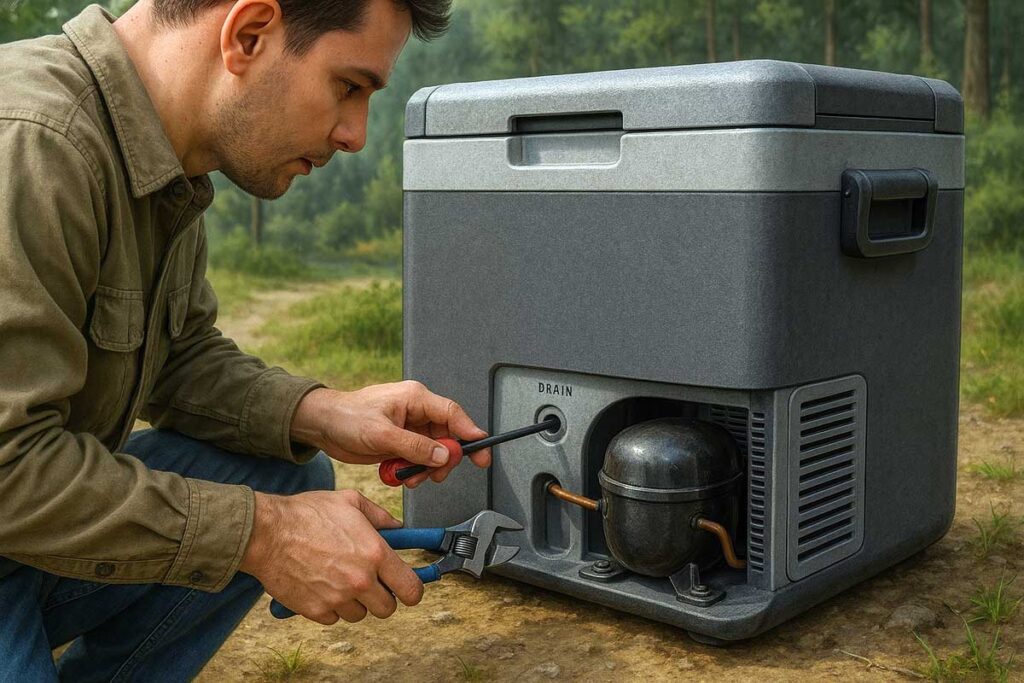
Identifying Unseen Leaks and Faults
- Inspect the Compressor and Drainage: In compressor-based fridges, there is often a drainage path to allow condensation to exit. Check if the drain is clogged or misaligned. Clearing any blockages or adjusting the positioning can result in less water accumulation.
- Check for Physical Damage: Look for cracks or damage in the insulation. Even small gaps can allow humid air to enter. Repair these issues with recommended materials for outdoor appliances or consult a professional for replacement parts.
Adjusting for Environmental Extremes
- Camping in Wet Conditions: If your campsite is prone to rain or excessive humidity, consider using a cover that protects the fridge while still allowing air circulation. Many campers have found that using a waterproof cover that fits snugly around the fridge can reduce moisture ingress.
- Using a Secondary Barrier: For extended trips in humid areas, placing your camping fridge inside a small, ventilated shelter might help regulate the internal temperature. This double barrier system reduces exposure to extreme environmental shifts.
Monitoring and Record Keeping
- Set Up a Log: Record the operating temperature and note any instances of water accumulation. Over time, you may identify patterns that suggest optimal settings or the need for maintenance. A simple notebook or digital log on your smartphone works well for this purpose.
- Seasonal Adjustments: Adjust your operating practices based on seasonal changes. When camping during humid or rainy seasons, you might need to slightly adjust the fridge’s settings or increase the frequency of maintenance.
Table: Quick Reference for Managing Water in Camping Fridges
| Aspect | Action Steps | Benefits |
|---|---|---|
| Regular Cleaning | Wipe interior with a dry cloth after each use. | Reduces existing moisture and prevents mold. |
| Seal Inspection | Check and replace worn door seals. | Keeps warm, moist air from entering. |
| Proper Positioning | Use a dry platform and level surface. | Prevents additional moisture from ground contact. |
| Temperature Control | Maintain an optimal, moderate setting. | Minimizes drastic internal temperature changes. |
| Minimize Door Openings | Group items and plan access to reduce frequency. | Limits warm air entry. |
| Ventilation Check | Ensure vents are unobstructed. | Enhances air circulation and stability. |
| Moisture Absorbers | Use silica gel packs or similar products. | Absorbs excess internal moisture. |
| Drainage Maintenance | Clear drainage paths and check compressor area. | Prevents water from pooling. |
Personal Experiences and Practical Advice
Over the years, I have observed various factors that contribute to the water formation issue in camping fridges. Based on my experiences, here are a few practical tips:
- Select the Right Fridge: Choose a model with proven reliability and good insulation. Models with clearly defined drainage systems tend to perform better in humid conditions.
- Routine Checks: Even when using your fridge frequently, set aside a few minutes daily to look for signs of water buildup or damage. Small problems early on can prevent larger issues later.
- Invest in Quality Accessories: The market offers many accessories designed to manage internal moisture. Investing in a robust desiccant pack and an effective cover can make a noticeable difference.
- Plan Ahead for Extended Trips: When planning a multi-day trip, bring extra maintenance tools such as microfiber cloths, spare desiccant packs, and a small toolkit for minor repairs. Such preparation reduces unexpected interruptions during your trip.
- Balance Your Load: Overloading the fridge with warm items can increase condensation. Allow items to cool before placing them inside. A balanced load helps maintain a steady internal temperature.
Additional Techniques to Reduce Condensation
Apart from daily maintenance, here are other techniques that can help manage condensation effectively:
- Pre-Cool Items: Where possible, cool items before storing them. This simple step reduces the difference in temperature when items enter the fridge.
- Use Insulated Containers: Place sensitive or moisture-heavy food in insulated containers inside the fridge. These extra layers provide another barrier against condensation.
- Regular Airing Out: When safe to do so, let the fridge run empty for a short period. This allows the internal environment to stabilize and any built-up moisture to evaporate harmlessly.
- Monitor Weather Conditions: Weather plays a large role in humidity levels. During humid weather or after sudden temperature shifts, check the fridge more frequently for moisture accumulation.
- Customizable Settings: Some modern camping fridges offer adjustable thermostat settings. Experiment with these settings to achieve a balance that minimizes condensation without compromising cooling efficiency.
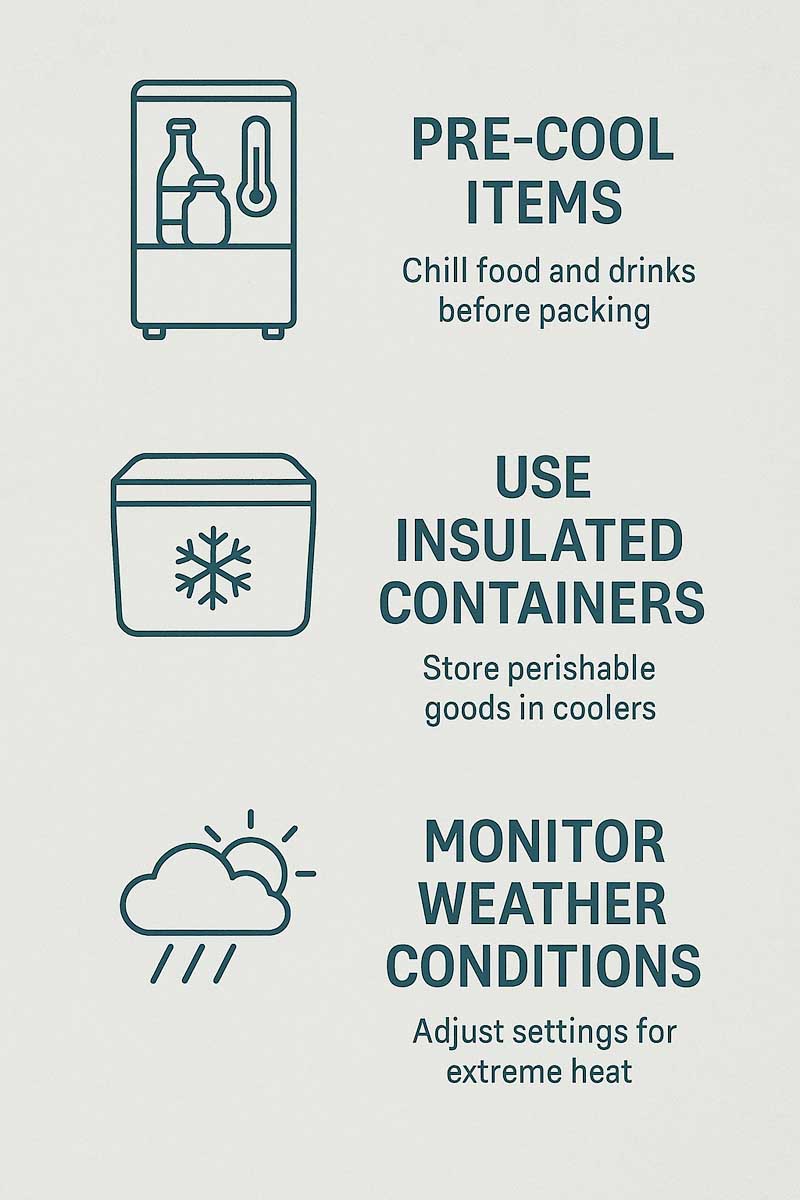
FAQs about Water Form in the Bottom of Camping Fridges
Final Thoughts
In summary, water forming in the bottom of camping fridges is a normal part of their operation. It’s the result of condensation—a process that occurs when warm, humid air meets the cold surfaces inside your fridge. By understanding the underlying mechanism and adopting simple maintenance routines, you can minimize its effects and protect your gear. Regular cleaning, proper ventilation, and mindful usage are key to preventing excessive water accumulation.
Remember, maintaining your camping fridge not only ensures the longevity of the appliance but also enhances the overall camping experience. I hope this detailed guide has provided you with actionable insights and practical tips to manage condensation effectively. Enjoy your adventures with confidence, knowing that you have the know-how to keep your camping equipment in optimal condition.
Stay safe and happy camping!

